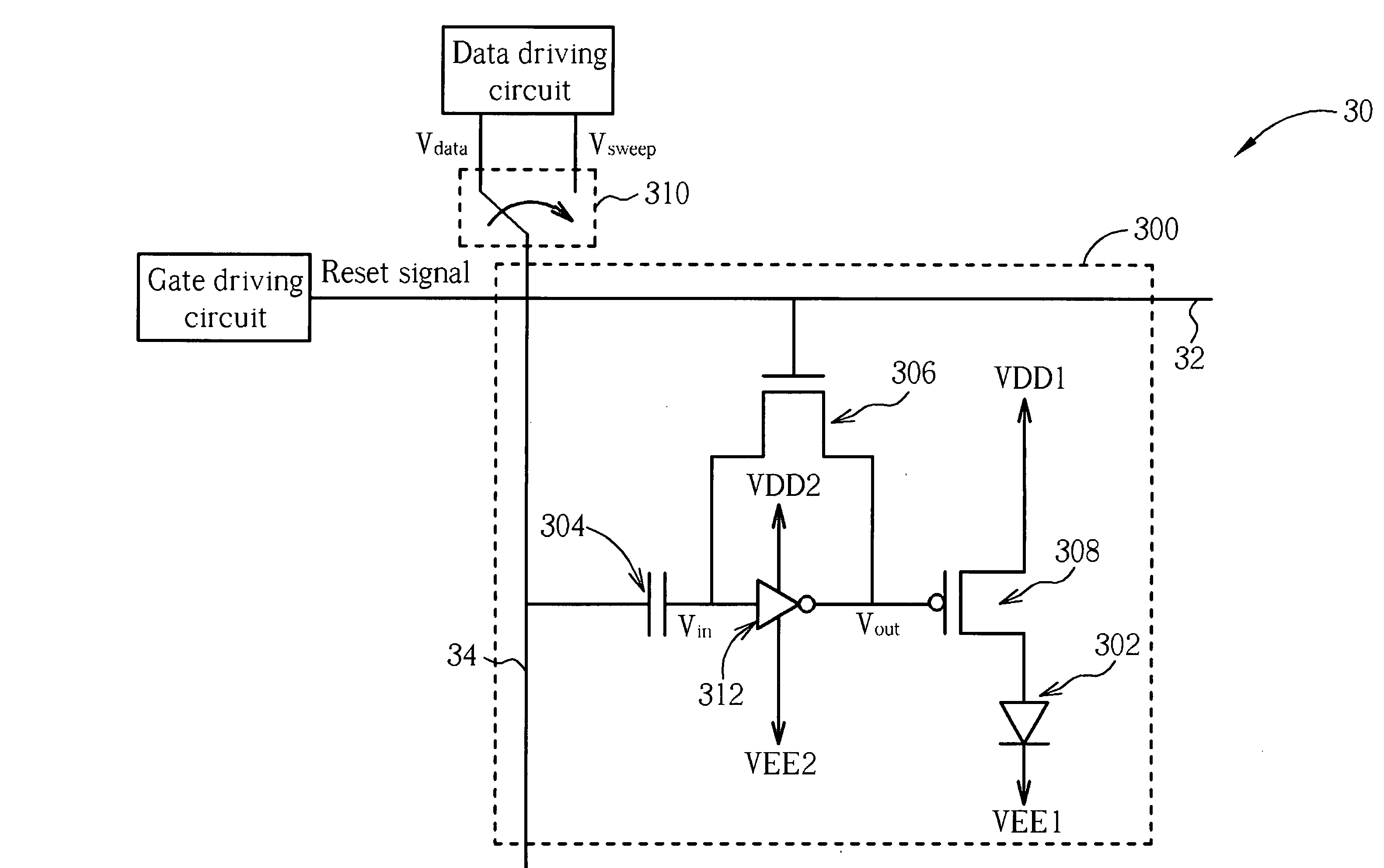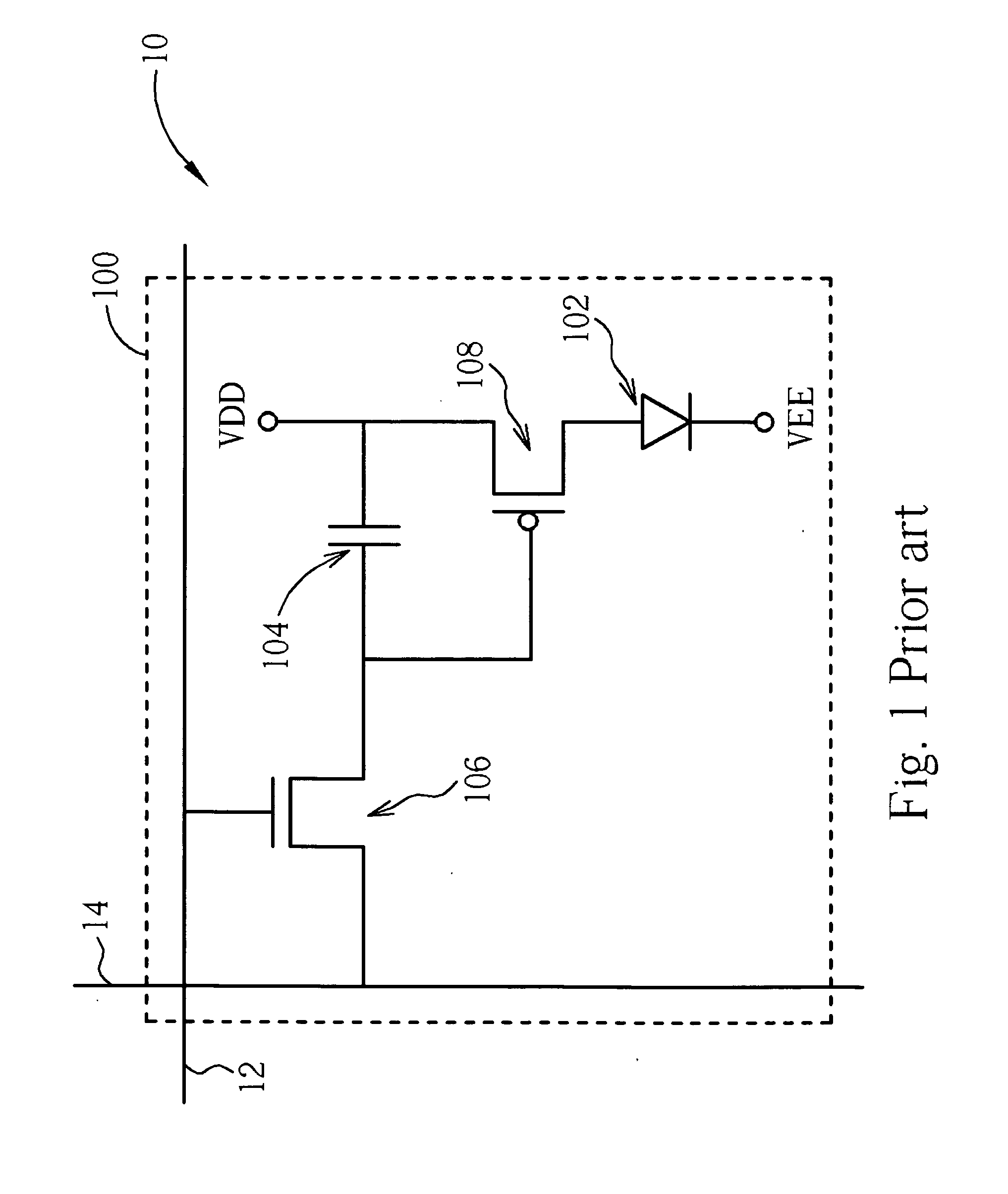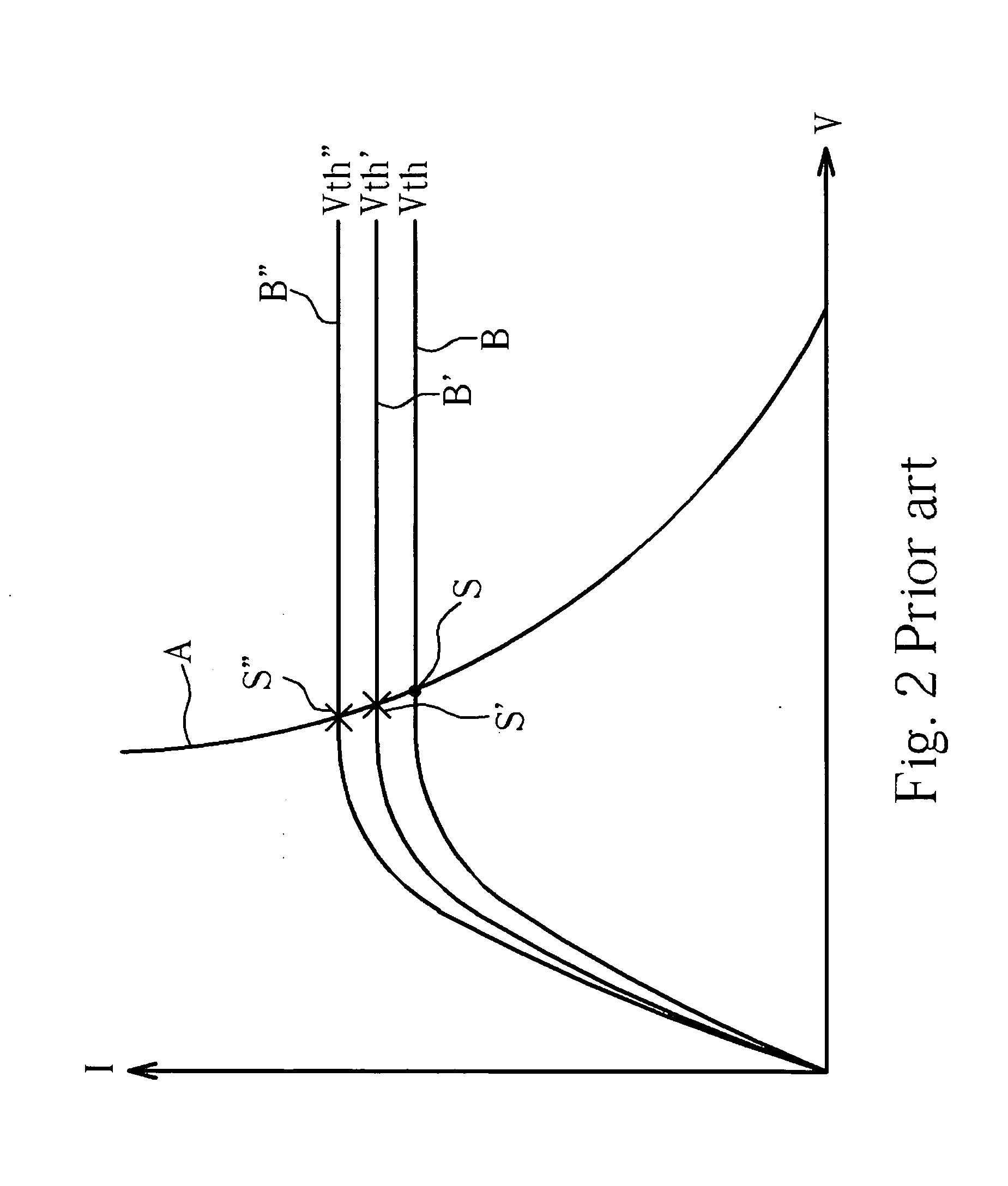Systems for displaying images involving reduced mura
a mura and image technology, applied in the field of display devices, can solve the problems of poor display uniformity of prior art amoled b>10/b>
- Summary
- Abstract
- Description
- Claims
- Application Information
AI Technical Summary
Benefits of technology
Problems solved by technology
Method used
Image
Examples
first embodiment
[0040]FIG. 5 shows the matrix of the AMOLED 30 according to the present invention. The AMOLED 30 shown in FIG. 5 includes a data driving circuit 36, a gate driving circuit 38, a plurality of data lines 34, a plurality of scan reset lines 32, and a plurality of pixels 300. Power lines 51-54 are used to respectively provide power from the voltage sources VDD1, VDD2, VEE1 and VEE2 to each pixel 300. The voltage source VDD1 supplies voltages to the pixels 300 via corresponding switches 410. The relay switches 310 control passages of the data signal Vdata and the sweep signal Vsweep from the data driving circuit 36 into corresponding data lines 34.
[0041]FIG. 6 shows a timing diagram illustrating the overall operation of the first embodiment during a frame period. Vout represents the voltage level at the output end of the inversion unit 312, and Vsweep represents the voltage level of a sweep signal. Normally, a triangular pixel driving voltage as shown in FIG. 6 is used for the sweep sign...
second embodiment
[0046]FIG. 8 shows a system for displaying images that includes an AMOLED 60. The AMOLED 60 includes a plurality of pixels 600 arranged in a matrix manner, and only one pixel is shown in FIG. 6 for simplicity. The AMOLED 60 differs from the AMOLED 30 in that the AMOLED 60 includes a plurality of storage capacitors 304, reset switches 306, and inversion units 312. The inversion units 312 are coupled in series between the data line 34 and the gate of the driving TFT 308. The voltages established at the input and output ends of the series-coupled inversion units 312 are designated as Vin and Vout, respectively. The voltage sources used in the AMOLED 60 has the following relationship VDD2≧VDD1>VEE1≧VEE2, so that the driving TFT 308 works in the linear region.
[0047]FIG. 9 shows an overall Vin-Vout characteristic of the series-coupled inversion units 312 in AMOLED 80. In FIG. 9, a solid curve represents the voltage characteristic, Vto′ represents a turn-on voltage of the driving TFT 308 o...
third embodiment
[0048]FIG. 10 shows a system for displaying images that includes an AMOLED 70. The AMOLED 70 includes a plurality of pixels 700 arranged in a matrix manner, and only one pixel is shown in FIG. 7 for simplicity. The pixels 700, each including an OLED 702 as a pixel light emitting device, are coupled to external driving circuits via a corresponding scan line 72, a data line 74 and a sweep line 76. Each pixel 700 further includes a storage capacitor 704, a control switch 706, a driving TFT 708, a relay switch 710 and an inversion unit 712. The control switch 706, coupled between an input end of the inversion unit 712 and the data line 74, is either turned on or turned off based on scan signals received from the scan line 72. The storage capacitor 704, coupled between the sweep line 76 and the input end of the inversion unit 712, stores charges of sweep signals Vsweep via the relay switch 710. The driving TFT 708 can include a p-type TFT having a gate coupled to an output end of the inv...
PUM
 Login to View More
Login to View More Abstract
Description
Claims
Application Information
 Login to View More
Login to View More - R&D
- Intellectual Property
- Life Sciences
- Materials
- Tech Scout
- Unparalleled Data Quality
- Higher Quality Content
- 60% Fewer Hallucinations
Browse by: Latest US Patents, China's latest patents, Technical Efficacy Thesaurus, Application Domain, Technology Topic, Popular Technical Reports.
© 2025 PatSnap. All rights reserved.Legal|Privacy policy|Modern Slavery Act Transparency Statement|Sitemap|About US| Contact US: help@patsnap.com



